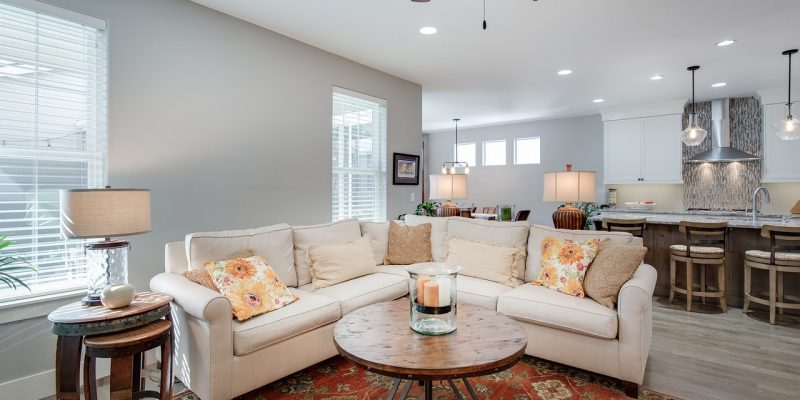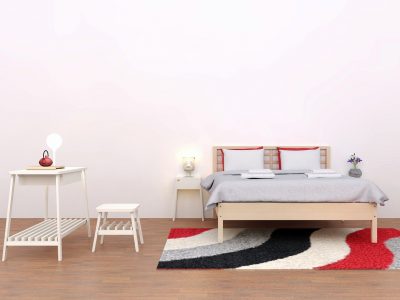Choosing new furniture for your home can be exciting, but it’s important to remember the most crucial step: measuring your space!
Measurements ensure that your new furniture will fit in your chosen room. But it’s not just about comparing room dimensions to furniture size. It would help if you also considered other measurements, like whether the furniture can even fit through your front entryway.
In this article, we’ll walk you through a simple step-by-step process for measuring your space and give tips on the best Furniture Store to visit. Let’s get started!
Why do Accurate Measurements Matter?
Ever bought something that didn’t fit in your space or blocked your way? It could be a better use of time, money, and effort. That’s why accurate measurements matter! They help you avoid purchasing furniture that doesn’t fit or obstruct pathways. Plus, precise measurements let you imagine how the table will look in your room and ensure it matches the overall design.
Essential Tools for Measuring
Before measuring, ensure you have all the tools you need to get accurate results. Here are the must-have tools:
- Tape measure: This handy retractable tool is perfect for accurately measuring lengths. It’s super versatile too!
- Laser measure: Take measuring to the next level with this advanced tool that uses laser technology for quick and precise distance measurements.
- Graph paper and pencil: These will be your best friends for sketching the room layout and jotting down all your measurements.
With these tools, you’ll be ready to measure like a pro!
Measuring the Room
Let’s measure the room to figure out how much space we have for our living room furniture. Here’s what you need to do:
Measuring the Length and Width of the Room
Begin by measuring the length and width of the room. Use the tape measure or laser measure to measure from wall to wall. Write down the measurements on your graph paper.
Considering Obstacles and Clearances
Take note of any obstacles or clearances in the room, like doors, windows, electrical outlets, or radiators. Measure their dimensions and keep them in mind when choosing furniture.
Determining the Ceiling Height
Measure the room’s height from the floor to the ceiling. This measurement is essential for selecting furniture that fits the vertical space.
Taking Note of Architectural Features
Observe any architectural features in the room, such as alcoves, niches, or built-in shelves. Measure their dimensions and factor them into your furniture placement plan.
Measure Your Existing Furniture for a Perfect Room Makeover
If you already have furniture in the room that you want to keep or incorporate into your new arrangement, it’s essential to measure it accurately. Follow these steps:
Measuring the Length, Width, and Height of Furniture
Measure the length, width, and height of each piece of furniture you wish to keep. Write down these measurements on your graph paper, making note of any irregular shapes or protrusions.
Considering Doorways and Pathways
Measure the width and height of the doorways and hallways the furniture needs to pass. Ensure that your furniture can fit through these spaces without any issues.
Evaluating Clearance Space Around Existing Furniture
Consider the space needed around existing furniture for comfortable movement. Measure the distances between furniture pieces and walls and the clearances required for doors to swing open freely.
Choosing the Perfect Furniture Size for Your Space
Alright, you’ve got all the measurements down. Now, let’s get to the fun part – finding the right furniture size for your space! But before we dive in, let’s take a moment to consider a few critical factors.
Choosing the Right Furniture Style
Take into account the style of furniture that complements your overall interior design. Modern, contemporary, traditional, or eclectic styles all have different size considerations.
Proportions and Scale
Ensure that your chosen furniture maintains the proper proportions and scale within the room. Avoid overwhelming small spaces with large tables or leaving large rooms empty with undersized furniture.
Balancing Function and Aesthetics
Balance the functionality and aesthetics of the furniture. Consider the purpose of the table and how it will be used in the space while ensuring it enhances the overall visual appeal.
Don’t Make These Rookie Mistakes!
Clearances Matters!
Picture this: you’ve just bought a beautiful new couch and can’t wait to set it up in your living room. But hold on! Did you consider clearances around the furniture? Failing to leave enough space can result in a cramped and impractical arrangement. Don’t let that happen to you!
Remember These Architectural Features!
You’ve worked hard to create a visually pleasing space, so why overlook those architectural features? It’s crucial to take them into account when placing your furniture. Otherwise, you may end up with a clash of styles or block off those eye-catching elements. Let’s avoid that, shall we?
Size Matters: Finding the Right Scale and Proportion
Choosing the wrong-sized furniture for a room can throw off the entire feel of the space. Don’t let your room feel unbalanced or awkward because of furniture that’s out of scale. It’s time to give scale and proportion the attention your furniture deserves.
So, if you’re ready to avoid these all-too-common mistakes and achieve a perfectly arranged space, keep these tips in mind. Your home will thank you!
The Secret to Perfect Furniture
To create a beautiful and practical space, measuring your furniture is essential. Don’t worry, though! This article will guide you through the steps to choose the perfect furniture that makes your space shine with your unique design style.










